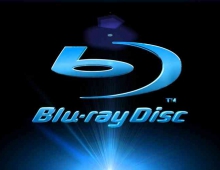
Blue Laser Discs: Dye or Phase Change Materials?
Until now, dye developers had to deliver materials that were
compatible with the increased recording speeds. In the next generation optical discs, the main challenge is to decide on the usage of dye or phase change materials for both Blu-Ray and HD DVD media.
The key component in a recordable optical storage medium is the
recording dye. The dye is responsible for forming the data marks
during recording, for media performance and for the longevity of the
information once stored. The dye should offer simple processing,
handling, and compatibility with wide recording at all speeds.
On the other hand, the phase change materials can be used instead of dyes. Until now, these materials were widely used for rewritable CD and DVD discs, since they offer the flexibility to record and erase the stored data.
HD DVD, which can be assumed as the successor of DVD in terms of physical structure at least, is currently closer to the use of dyes for the HD DVD media, while rival Blu-Ray is going with the phase change technology.
The Blu-Ray Disc specifications do not dictate to media makers to use either dye or phase change technologies for their media. So MKM, a dye-based company which will support both HD DVD and Blu-Ray formats, is currently working on new dyes for the next-generation discs.
Philips, a company with experience in phase change technologies is focusing on phase change materials for both BD-R/RE media. TDK is another example of a company with dye experience but it also focuses on phase change solutions for the first write-once and rewritable BD media.
The reason behind this decision is the fact that the nature of the BD layer makes the dye process complicated. The newly developed dye should be optimized to offer the best performance. In general, the dye should absorb the laser energy of the 405nm wavelength, and still reflect enough for playback, and have a good margin (tolerance) against the variations of wavelength.
The high density of the recorded data on the blue laser media requires a highly sensitive dye (quick absorption of light) to minimize birefringence and distortion during read and write procedures. The birefringence and distortion can be caused by a non-optimal angle of the laser beam axis. So the dye developed should balance the thermal interference issues with sensitivity, in the optimal dye. At the same time, they should take reflectivity seriously in order to maintain compatibility of the discs.
Even if a dye-based HD DVD-R disc can be made, things become more complicated in the case of two-layer HD DVD recordable media. There are two ways to produce a dual-layer disc. The "inverse stack" and the "2P". Both technologies are dependent on a high uniformity of the space layer between the disc's two halves. Unaxis, the only verified manufacturer of 16x DVD+R media, has been cooperating with MKM to develop a cost-effective HD DVD-R disc with the "inverse stack" method.
Currently it is difficult to foresee whether the dye or the phase-change technologies will be widely used. Certainly, the first Blu-Ray drives and media will be based on phase change technology. Mass demand is expected to drive the market, as usually happens, and it may lead to more economical production of dye-based media.
On the other hand, the phase change materials can be used instead of dyes. Until now, these materials were widely used for rewritable CD and DVD discs, since they offer the flexibility to record and erase the stored data.
HD DVD, which can be assumed as the successor of DVD in terms of physical structure at least, is currently closer to the use of dyes for the HD DVD media, while rival Blu-Ray is going with the phase change technology.
The Blu-Ray Disc specifications do not dictate to media makers to use either dye or phase change technologies for their media. So MKM, a dye-based company which will support both HD DVD and Blu-Ray formats, is currently working on new dyes for the next-generation discs.
Philips, a company with experience in phase change technologies is focusing on phase change materials for both BD-R/RE media. TDK is another example of a company with dye experience but it also focuses on phase change solutions for the first write-once and rewritable BD media.
The reason behind this decision is the fact that the nature of the BD layer makes the dye process complicated. The newly developed dye should be optimized to offer the best performance. In general, the dye should absorb the laser energy of the 405nm wavelength, and still reflect enough for playback, and have a good margin (tolerance) against the variations of wavelength.
The high density of the recorded data on the blue laser media requires a highly sensitive dye (quick absorption of light) to minimize birefringence and distortion during read and write procedures. The birefringence and distortion can be caused by a non-optimal angle of the laser beam axis. So the dye developed should balance the thermal interference issues with sensitivity, in the optimal dye. At the same time, they should take reflectivity seriously in order to maintain compatibility of the discs.
Even if a dye-based HD DVD-R disc can be made, things become more complicated in the case of two-layer HD DVD recordable media. There are two ways to produce a dual-layer disc. The "inverse stack" and the "2P". Both technologies are dependent on a high uniformity of the space layer between the disc's two halves. Unaxis, the only verified manufacturer of 16x DVD+R media, has been cooperating with MKM to develop a cost-effective HD DVD-R disc with the "inverse stack" method.
Currently it is difficult to foresee whether the dye or the phase-change technologies will be widely used. Certainly, the first Blu-Ray drives and media will be based on phase change technology. Mass demand is expected to drive the market, as usually happens, and it may lead to more economical production of dye-based media.





















